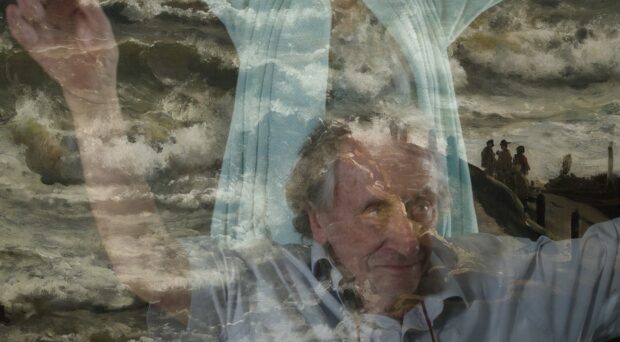The Museum of Zoology has around 5,000 specimens on display in the public galleries, but this is only a small fraction of what is stored on site. It is estimated that the Museum actually houses over 2 million specimens, with the majority held behind the scenes for preservation and research.
Of these, around half are insects and these represent a unique long-term dataset, which allows the scale of biodiversity change in the UK to be tracked into the past. We are working to give wider access to these specimens for the first time and publish their data online. However, this is a colossal task and that’s why we are starting with a single group, butterflies of the UK, which will be achievable over a two-year time frame. This project aims to engage people with the natural world and environmental change, both past and present, by linking historical zoological specimens with modern conservation initiatives.
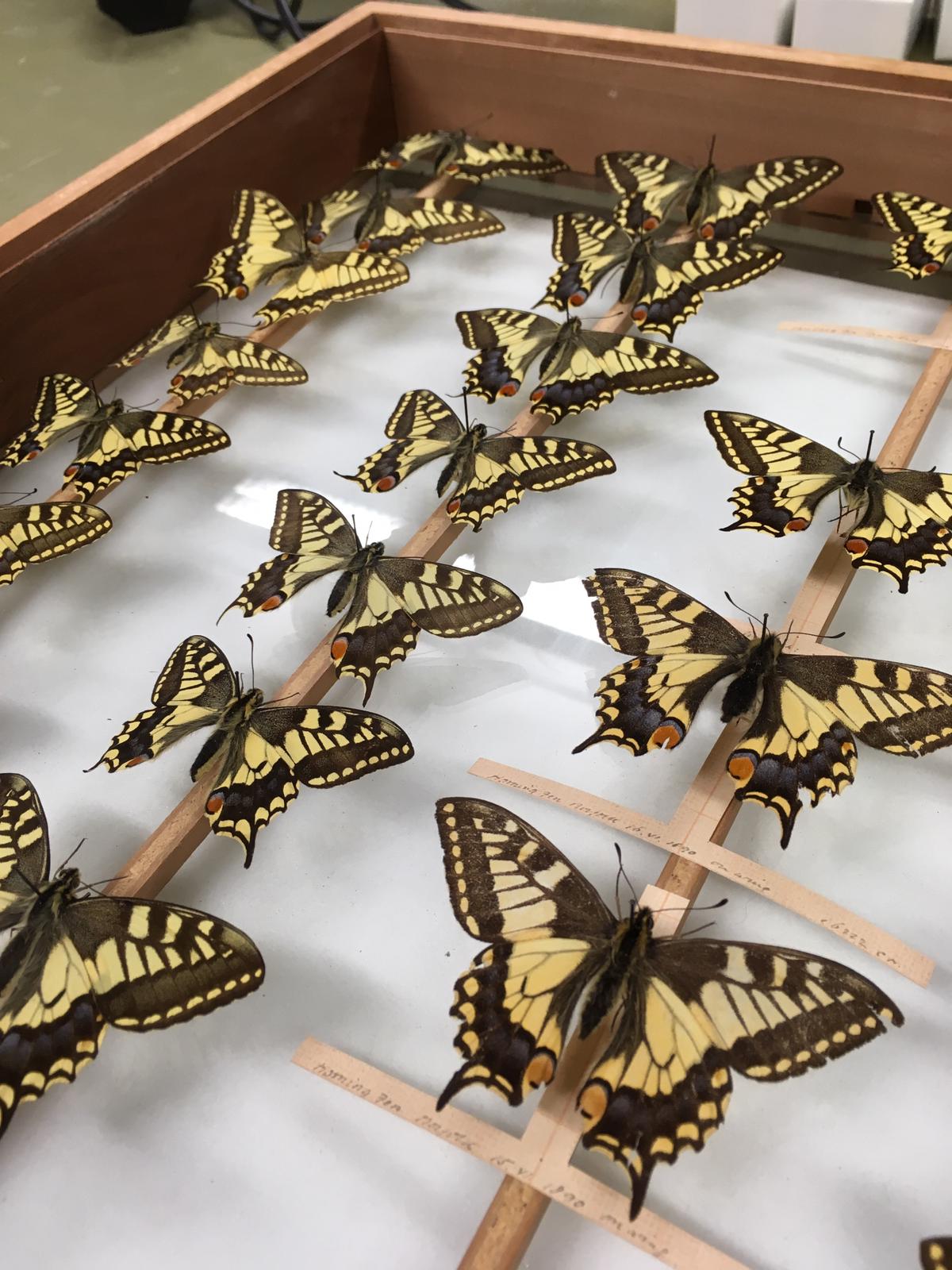
Swallowtail butterfly specimens; these are now locally extinct
Why butterflies?
We hope that a focus on butterflies will lead the way to engaging public audiences with broader insect diversity, their importance and their conservation. Insects are often unpopular with the public, commonly being regarded as pests. However, insects are amazingly diverse and represent more than half of all known species. They are also crucial for the proper functioning of ecosystems. For example, many visit flowers and are important pollinators, whilst others are decomposers, helping to break down organic matter and return nutrients to the soil. They are also a vital food source for other animals. Without insects many larger species, including ourselves, would struggle to survive as crops and other food sources would no longer be so productive. Due to their bright colours and association with Summer, butterflies are popular and act as a flagship for other insect species, making butterflies the perfect target for increasing public understanding and appreciation of this important group.
Butterflies are also sensitive to human-induced habitat change and can act as indicators for wider habitat deterioration. Therefore, declines recorded in butterfly populations can indicate declines in other species, and conservation action for butterflies can benefit many other animals and plants.
Public engagement
Globally, biodiversity loss is continuing at a rapid rate, due to conversion of natural habitats into agricultural areas. However, in the UK this conversion of biodiverse habitats was largely complete 150 years ago, meaning most people are unaware of how much their local environment has changed. Even apparently “natural” British landscapes have been extensively altered as a result of our agricultural and industrial heritage. Museum collections are required to view these long-term differences and increase awareness of this global problem.
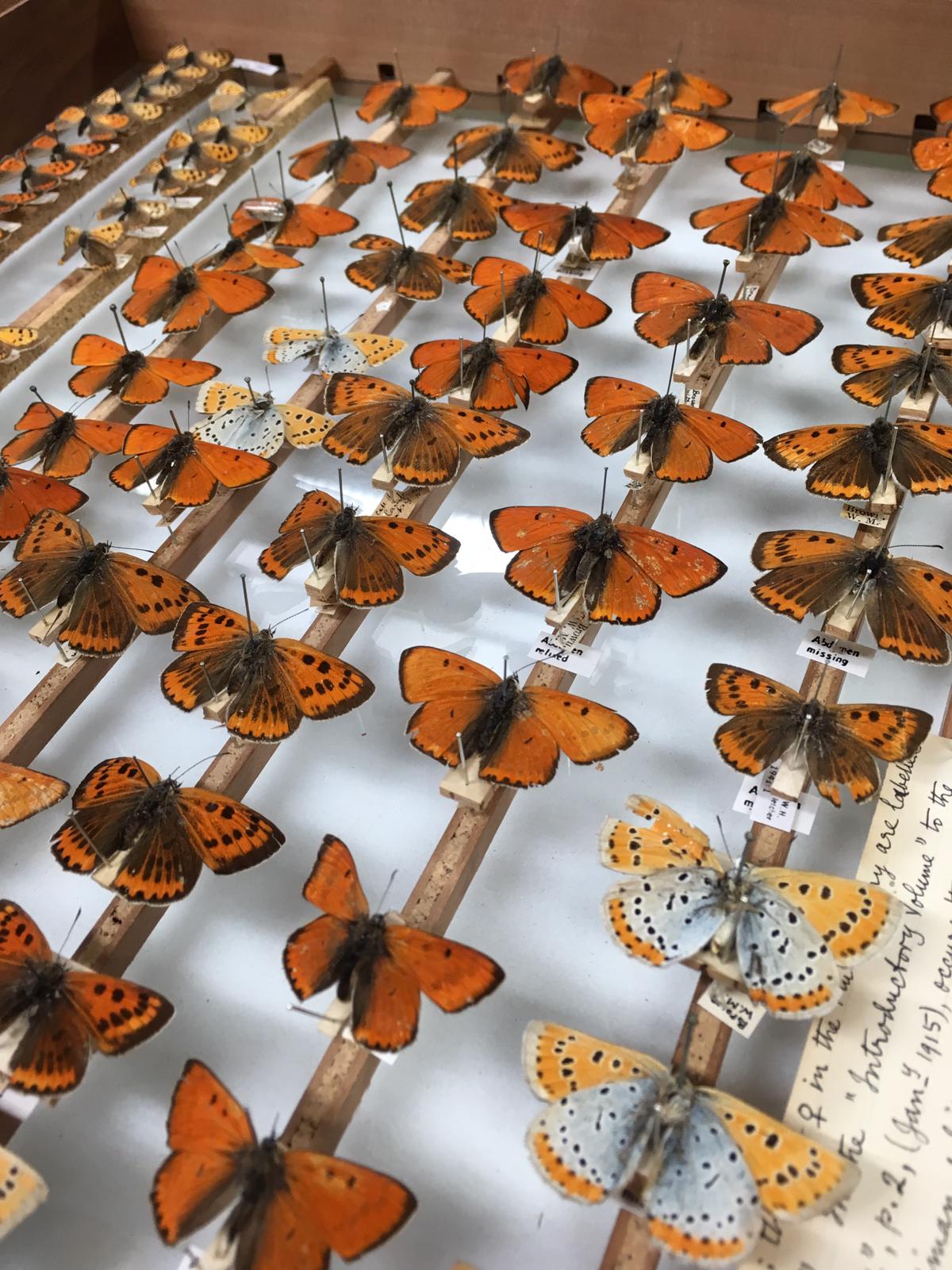
The Museum’s insect collection represents a unique long-term dataset, which allows the scale of biodiversity change in the UK to be tracked into the past. The collection contains an extensive record of insects collected from the local area, extending back nearly 200 years, including specimens from some of the country’s oldest nature reserves, many of which are still actively managed for conservation. Some of the earliest specimens were collected during the first half of the 19th century by accomplished naturalists of the day, such as Charles Darwin, and are particularly valuable in allowing an assessment of wildlife’s slow decline.
For example, some of the species stored in the Museum were caught in Cambridgeshire but are now locally or nationally extinct, like the Swallowtail (image above) and Large Copper butterflies (image below). These are wetland specialists and the fact that they can no longer be found in the area indicates that large changes have taken place. After these Museum specimens were caught, some of the last extensive wetlands in Cambridgeshire were drained and many of the species that relied on them disappeared. Over the last few hundred years it is estimated that as much as 99% of this biodiverse habitat has been lost across the UK. Observing extinct species in museum collections is one of the clearest ways to convey the negative effects this has had.
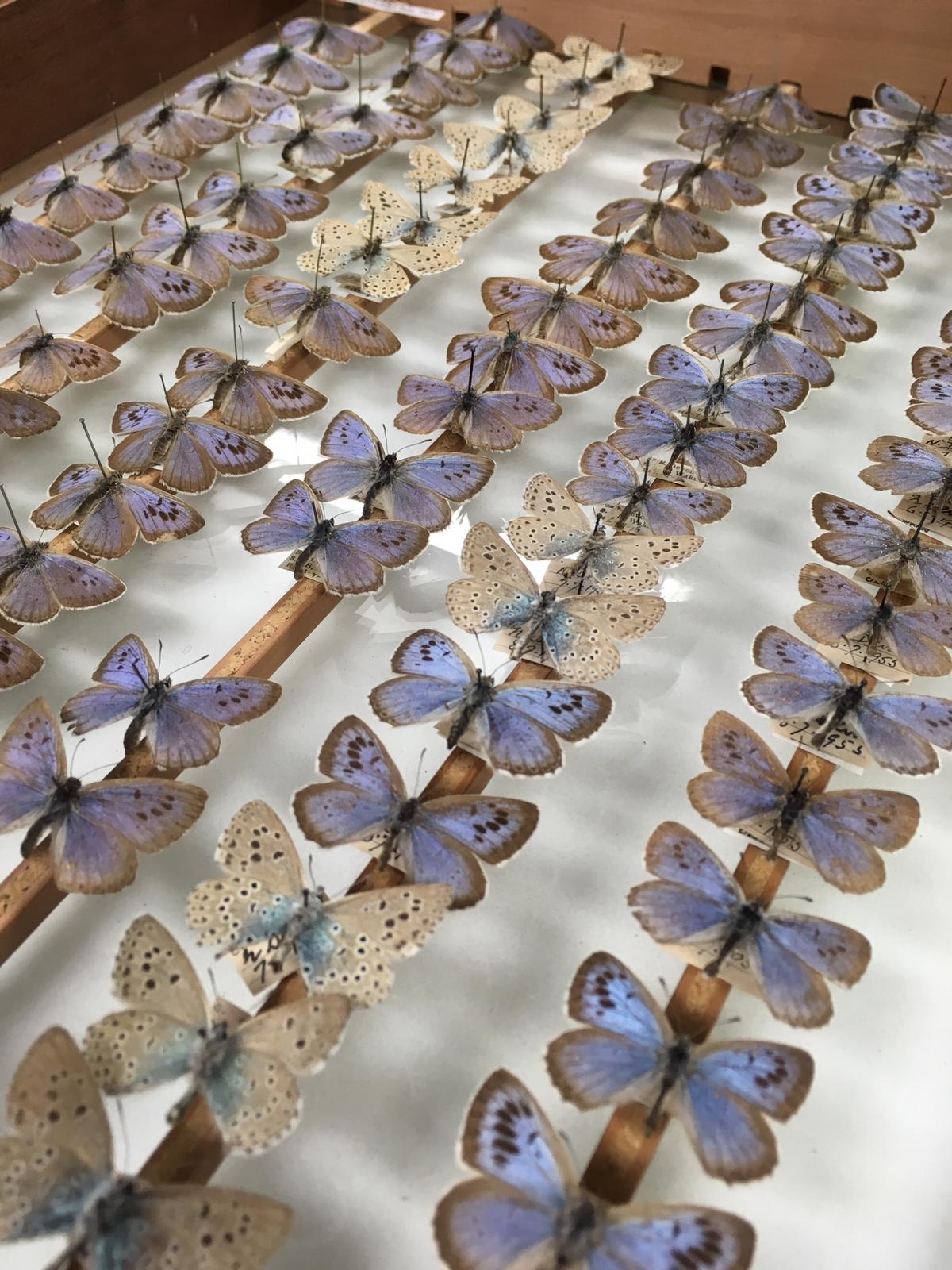
However, it is not all doom and gloom and the collections also contain butterfly species such as the Chequered Skipper and Large Blue. These species went extinct in England but have since been reintroduced. Specimens from the original populations can be used to tell the story of their decline but can also engage people with the positive impact of conservation.
This project’s public engagement programme will bring new audiences to the Museum, where they can learn about the history of local wildlife and many of the species that have sadly been lost from the area. We will also be visiting schools and Wildlife Trust nature reserves, to show people how they can still engage with wildlife and the natural world today.
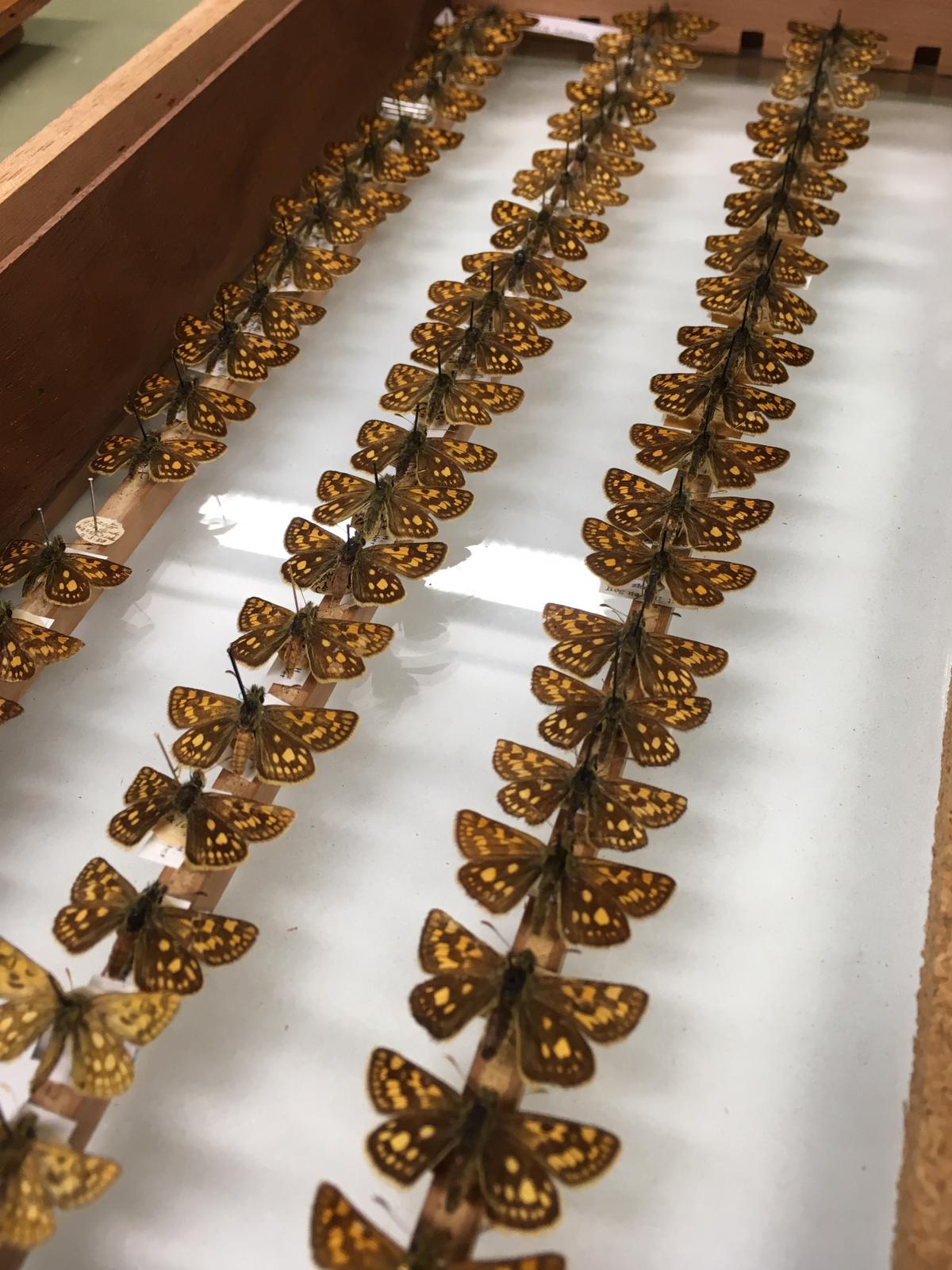
Conservation
In addition to increasing awareness of long-term declines, we also want to highlight some of the fantastic conservation work being undertaken to help species bounce back. Local organisations such as the Wildlife Trust for Bedfordshire, Cambridgeshire and Northamptonshire (WTBCN) are undertaking large-scale habitat restoration projects. Working alongside them, we hope to publicise and gain wider public support for these projects, as well as use historical museum data to help inform restoration.

Large-scale restoration activities represent a rare opportunity to reverse some of the catalogued declines in species diversity and an exciting way to engage diverse audiences in conservation action. For example, as a result of wetland restoration at sites such as the WTBCN’s Great Fen, it may be possible to restore populations of some of the previously mentioned wetland butterfly species, such as the Swallowtail and Large Copper. The ‘Butterflies Through Time’ project will provide a record of historical species distributions and represents a permanent, lasting enrichment of our scientific context, informing habitat restoration and allowing its success to be gauged from a long-term perspective.
In this way, we will help ensure that these insects are not just a thing of the past and that in the future, a larger audience will get to enjoy them.
To find out more about what’s going on at the Museum of Zoology, visit our website and look out for upcoming events. To learn more about wildlife in your area, visit the BCN Wildlife Trust website. Here you can find out about local nature reserves, how to get involved with volunteering and discover other ways to support wildlife near you.







